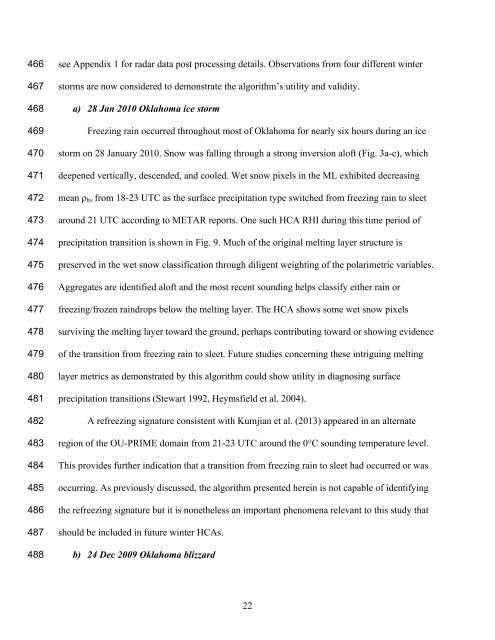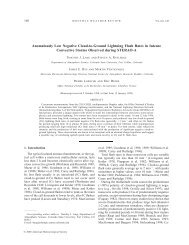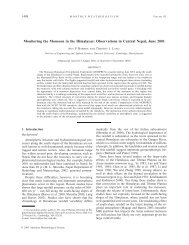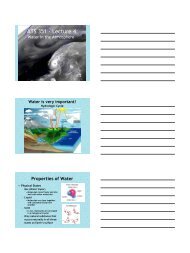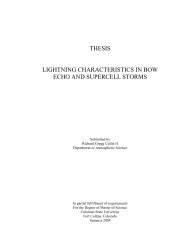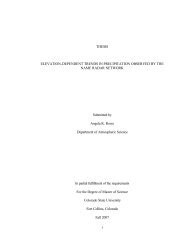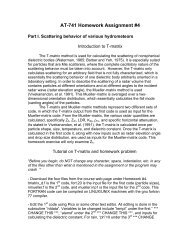1 A dual-polarization radar hydrometeor classification algorithm for ...
1 A dual-polarization radar hydrometeor classification algorithm for ...
1 A dual-polarization radar hydrometeor classification algorithm for ...
Create successful ePaper yourself
Turn your PDF publications into a flip-book with our unique Google optimized e-Paper software.
466467468469470471472473474475476477478479480481482483484485486487488see Appendix 1 <strong>for</strong> <strong>radar</strong> data post processing details. Observations from four different winterstorms are now considered to demonstrate the <strong>algorithm</strong>’s utility and validity.a) 28 Jan 2010 Oklahoma ice stormFreezing rain occurred throughout most of Oklahoma <strong>for</strong> nearly six hours during an icestorm on 28 January 2010. Snow was falling through a strong inversion aloft (Fig. 3a-c), whichdeepened vertically, descended, and cooled. Wet snow pixels in the ML exhibited decreasingmean ! hv from 18-23 UTC as the surface precipitation type switched from freezing rain to sleetaround 21 UTC according to METAR reports. One such HCA RHI during this time period ofprecipitation transition is shown in Fig. 9. Much of the original melting layer structure ispreserved in the wet snow <strong>classification</strong> through diligent weighting of the polarimetric variables.Aggregates are identified aloft and the most recent sounding helps classify either rain orfreezing/frozen raindrops below the melting layer. The HCA shows some wet snow pixelssurviving the melting layer toward the ground, perhaps contributing toward or showing evidenceof the transition from freezing rain to sleet. Future studies concerning these intriguing meltinglayer metrics as demonstrated by this <strong>algorithm</strong> could show utility in diagnosing surfaceprecipitation transitions (Stewart 1992, Heymsfield et al. 2004).A refreezing signature consistent with Kumjian et al. (2013) appeared in an alternateregion of the OU-PRIME domain from 21-23 UTC around the 0°C sounding temperature level.This provides further indication that a transition from freezing rain to sleet had occurred or wasoccurring. As previously discussed, the <strong>algorithm</strong> presented herein is not capable of identifyingthe refreezing signature but it is nonetheless an important phenomena relevant to this study thatshould be included in future winter HCAs.b) 24 Dec 2009 Oklahoma blizzard22


